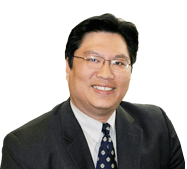What motivates someone to manage a Marketocracy Fund for 5 years or more? Who are these people? By and large these are people who are responsible for their family’s investment decisions. Every family has one. They fulfill this responsibility without complaining, and often without compensation. They figure that if they protect their family from Wall Street’s fads, foibles, and inherent conflicts, they will have contributed a great deal to their family’s financial security. This is the source of the passion that motivates them. Our data shows that overall these people perform about as well as mutual fund managers do as a group and about what would be expected from academic theory. But, I believe that it is within this group, that we are likely to find managers with the talent, track record, and passion to be considered the next Warren Buffetts.
How Did They Do?
At the end of March, there were 5,799 Marketocracy model funds with at least a 5 year history. For the last 5 years, this group had a gross average annual return (before management fees but after commissions) of 1.9% per year. The S&P 500 (including dividends) averaged 2.9% per year for the same 5 year period. This data supports one of academia’s best insights — as a group, active investors have to earn the market average return minus expenses. Here’s why.
As a group, all investors own all the publicly traded stocks so in total they get the return on all stocks. Now, lets divide all investors into two groups — indexers, and active investors. We know the indexers are going to get the market average return, so that must mean that the active investors (as a group) have to also get the market average return except they incur more expenses. The idea that active investors as a group will earn the market average return minus expenses has been shown to be true of mutual fund managers and our data supports extending this conclusion to active individual investors.
Should We All Be Indexers?
Not necessarily. It is only if you invest in all active managers that you are pretty much guaranteed to do worse than the indexers by the amount of your expenses. But investing in all active managers is a strategy that no one recommends. There is a big difference between an active manager and a skilled manager. I think everyone agrees that unskilled active managers should be avoided.
The choice is not so much between active vs. passive strategies, but between skilled managers and passive strategies. I would go so far as to say that in the absence of evidence of an active manager’s skill, investors are well-advised to be indexers.
The First Cut
In looking for evidence of skill, I think a good first cut is to look at managers who have a long track record of outperforming the market by a wide enough margin to make a difference. If we look for managers who have a 5 year track record of outperforming the S&P 500, here’s what we find.
Number of Active Marketocracy Funds > 5 years: 5,799
5 Year Return >= SP500 + 300 basis points/yr: 960
5 Year Return >= SP500 + 600 basis points/yr: 398
When we apply this “first cut” criteria to the mutual fund world, here’s what we find.
Number of U.S. Equity Mutual Funds: 8133
Manager Tenure > 5 years: 4310
5 Year Return >= SP500 + 300 basis points/yr: 429
5 Year Return >= SP500 + 600 basis points/yr: 61
Source: Morningstar
This first cut has narrowed our search for the next Warren Buffett down to 459 managers — 398 Marketocracy managers and 61 mutual fund managers. Each of these managers has an individual track record that is at least 5 years and each has outperformed the S&P 500 by at least 600 basis points, or 6%, per year for the last 5 years. If we set the bar any higher, by either requiring a longer track record or a higher return, the mutual fund world will quickly run out of candidates.
The next article will discuss using additional measures of skill to winnow the field further.
The first article in this series is “Finding The Next Warren Buffett.”



